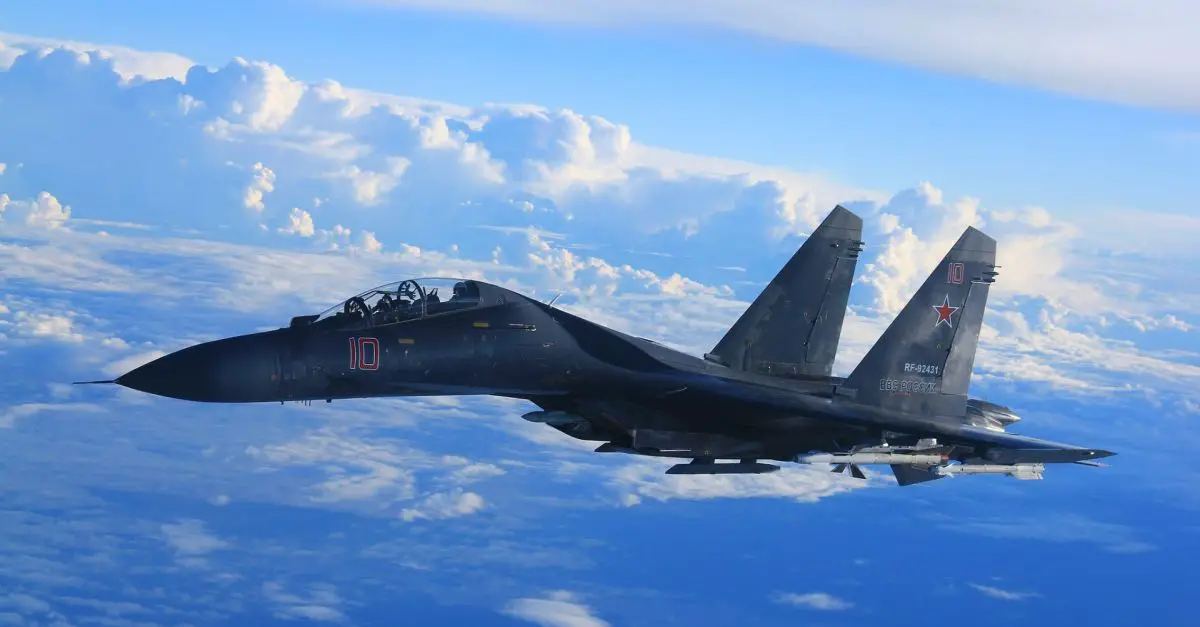Breaking news
Analysis : Su-35 deployment in Ukraine the brutal end of utopia.
The Su-35 was Russia's attempt to keep pace with its American and Chinese competitors. Not quite a fourth-generation fighter jet, but not entirely a fifth-generation fighter either, the Russian defense industry described the jet as belonging to its own unique category of "fourth generation ++." It is comparable to the new F-15EX Eagle II of the U.S. Air Force, which is also considered a "fourth generation ++" system.
Follow Army Recognition on Google News at this link

Su-35 of Russian Aerospace forces (Picture source: Russian MoD)
An enhanced variant of the Su-27, NATO has designated the Su-35 as the "Flanker-E." The Russian defense community claimed that the Su-35 was superior to the U.S. Air Force's F-16. Some even asserted that the Flanker-E was comparable to the American fifth-generation fighter, the F-35 Lightning II. Indeed, the Su-35 incorporates many features of fifth-generation fighter jets. However, the aircraft was introduced in 2008 and has equipped the Russian Aerospace Forces since 2014. It must be noted that the Su-35 is not comparable to the F-35 and would probably not be better than an F-35 in an aerial combat, whether at long or short range. The F-35 is newer, has more operational and proven armament, and despite years of development and accidents, it has been massively exported, especially in Europe.
Su-35: A Vicious Warbird
On paper, the Su-35 is certainly a vicious warbird.
It possesses enhanced stealth capabilities, next-generation radar systems, and improved engines, all of which are more likely to be found in a true fifth-generation platform rather than a fourth-generation system, which is why the Russians have designated the Su-35 as something more than a simple fourth-generation warplane.
The Su-35 is also a versatile fighter. It can conduct air defense, ground assaults, and naval strikes. The Flanker-E can attack targets at long distances, and its lack of technological superiority has been particularly utilized in the Ukrainian theater today.
The Su-35 has a range of armaments that make it extremely lethal at any distance. It has a 30mm cannon and can carry air-to-air missiles, air-to-ground missiles, and anti-ship missiles. In total, the Su-35 can carry eight tons of armaments, including a payload of hypersonic weapons. The fighter jet can reach a maximum speed of Mach 2.5, with an operational range of 3,600 kilometers (or 2,236 miles per hour).
A notable feature of the Su-35 is its Ibris-E passive electronically scanned array radar, which allows the Su-35 to see targets at great distances. The warplane uses an advanced infrared search and track system capable of detecting the thermal emissions of aircraft up to 50 kilometers (31 miles) away. Like the F-35, the Su-35 is equipped with multiple sensor nodes integrated by an advanced cockpit information control system, giving the Su-35 pilot unprecedented situational awareness.
But reality always comes .
Su-35 Flanker-E in the Ukraine War
The Russian Su-35 has faced the crucible of combat in the Ukraine war. According to several sources, the warplane has not performed as expected. Last November, Ukrainians had downed five Su-35s. Additionally, it was reported at the beginning of 2024 that a Ukrainian Patriot missile battery had downed two more Su-35s in combat. Even the Su-35 manufacturer, Komsomolsk-on-Amur, admitted that the Su-35 had not delivered the expected results in the hostile skies of Ukraine.
In fact, the Russian Air Force has somewhat changed its tactics in deploying the Su-35. They have leveraged the Su-35's long-range combat capabilities, launching beyond-the-horizon strikes against Ukrainian targets. According to Ashish Dangwal of the EurAsian Times, these Russian tactics have "forced Ukrainian fighter jets to operate at lower altitudes." Nonetheless, early in the Ukraine war, in September 2022, it was reported that the Su-35 had claimed "at least seven air-to-air victories" over Ukrainian fighters.
Problems with the Su-35 Production Chain
On the other hand, the Su-35 has faced new complications in its production chain. It is worth noting that many key components of the Su-35's design are actually Western devices. This is where Western sanctions have severely impacted the Russian defense industry. The Su-35 production chain has been stalled due to the platform's reliance on Western technology.
However, the idea that the Su-35 is pure scrap is exaggerated. The Su-35 is truly a mixed bag. This is because it is a hybrid of fourth and fifth-generation warplanes.
Given the extent of misinformation perpetrated by both sides in the Ukraine war, there is no way to know for certain how effective or ineffective the Su-35 has been. Yet, we can understand that its reputation has been seriously damaged, as many foreign countries interested in purchasing the platform from Russia have begun to withdraw after reports of its poor performance in the skies over Ukraine were reported.
Moreover, the fact that the Russian defense industry has begun to phase out its production of the Su-35 series of fighter jets and is turning towards the Su-57, the current Russian fifth-generation warplane, should indicate to Western analysts that the Su-35 has not performed as well as Moscow had hoped. This casts great uncertainty on the future of these intermediate-generation aircraft.


























